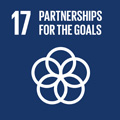- Docente: Tullio Salmon Cinotti
- Credits: 9
- SSD: ING-INF/05
- Language: Italian
- Moduli: Tullio Salmon Cinotti (Modulo 2) Luca Roffia (Modulo 1) Nicola Testoni (Modulo 3)
- Teaching Mode: Traditional lectures (Modulo 2) Traditional lectures (Modulo 1) Traditional lectures (Modulo 3)
- Campus: Cesena
-
Corso:
First cycle degree programme (L) in
Electronics Engineering for Energy and Information (cod. 8767)
Also valid for First cycle degree programme (L) in Biomedical Engineering (cod. 0946)
Learning outcomes
The course provides a reference framework to understand the
behaviour of simple microprocessor based systems, focusing
on:
- logic design principles and reference model
- digital systems core components
- basics of computer architecture
- architecture impact on performance
- system design
Course contents
Information Coding and binary codes Analysis and synthesis of
combinational, asynchronous and synchronous circuits Von Neumann
conceptual model of stored program computers
Computer Architecture and performance
ISA (Instruction Set Architecture) RISC and CISC
Architectures
CPU structure and ISA implementation:
Control Unit and Data path
Sequential implementation of a RISC processor (DLX)
Exception handling and input/output processing
Interfacing memory and and input/output devices to the
microprocessor bus
Design of simple microprocessor based systems
Readings/Bibliography
Ashenden: "Digital Design" - Morgan Kaufmann pub. Inc.
Hennessy Patterson: "Computer architecture: a quantitative
approach" - Morgan Kaufmann pub. Inc.
Teaching methods
Slides stored in the platform (IOL) are presented and interactively discussed in the classroom.
Assessment methods
Assessment os based on three written tests. Each test addresses a
specific syllabus section:
- Digital circuit theory: combinational logic and synchronous sequential machines (1 hour)
- CPU hardware architecture (ISA and CPU structure: Control Unit and Data Path) (55 minutes)
- Input/output management: hardware and software drivers (two hours)
There are 33 points available for each test. The final result is the average rounded to the nearest integer. If the average is above 30, then you get "30 e Lode".
Teaching tools
Office hours
See the website of Tullio Salmon Cinotti
See the website of Luca Roffia
See the website of Nicola Testoni
SDGs


This teaching activity contributes to the achievement of the Sustainable Development Goals of the UN 2030 Agenda.
